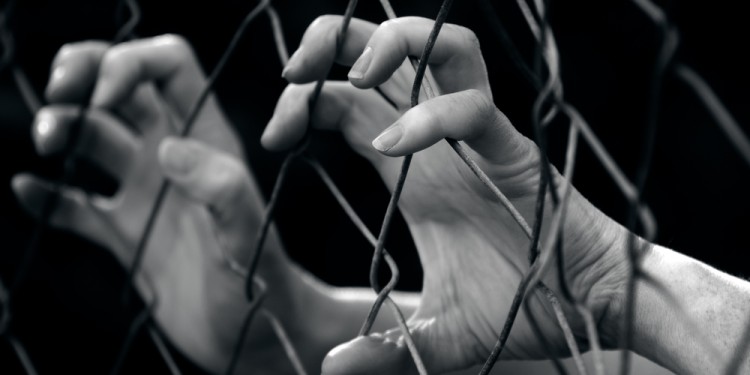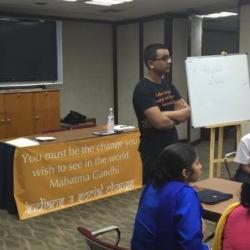Rape in India

Introduction
Rape in India has been in the spotlight both domestically and internationally. It is one of the most talked about women’s issues, and one that garners the most media coverage. While India is in no way unique for it’s rape problem (there are more reported cases per year in the United States), it is still a substantial problem for Indian society. Of course, there is no way to accurately find an estimate of the number of rapes in a country given these statistics only account for reported cases. India is one of many countries where women are reluctant to report rape cases due to a myriad of factors, and the most common being the fear of being blamed and brining shame to the family’s honor.
Rape is not a new problem in India, and has been used as a weapon of war and revenge for centuries. The underlying problem seems to be a history of viewing women as property and marginalization. To rape a women was to hurt her husband or father’s property and thus an effective weapon against them. This thinking is being challenged, but much more work needs to be done.
While the other problem still undoubtedly persists, the new notion is simply boiled down to believing women are simply sex objects to be used whenever and wherever a man chooses to engage in sexual activity. Both thoughts combine to create a hostile environment for women and allow rape to be commonplace in Indian society. Due to mass marginalization of women both in households and in society, women were viewed as vulnerable and a means to an end by many members of society.
While modern Indian society has challenged both beliefs in many ways, there is still a large number of people in India who seem to adhere to them. These serve as massive factors for the rape problem in India.
Problem
Rape is defined by the Indian Penal Code in Section 375 as:
A man is said to commit “rape” who, except in the case hereinafter excepted, has sexual intercourse with a woman under circumstances falling under any of the six following descriptions: –
First: – Against her will.
Secondly: -without her consent.
Thirdly: – With her consent, when her consent has been obtained by putting her or any person in whom she is interested in fear of death or of hurt.
Fourthly: -With her consent, when the man knows that he is not her husband, and that her consent is given because she believes that he is another man to whom she is or believes herself to be lawfully married.
Fifthly: – With her consent, when, at the time of giving such consent, by reason of unsoundness of mind or intoxication or the administration by him personally or through another of any stupefying or unwholesome substance, she is unable to understand the nature and consequences of that to which she gives consent.
Sixthly: – With or without her consent, when she is under sixteen years of age.
Explanation: – Penetration is sufficient to constitute the sexual intercourse necessary to the offence of rape.
Exception: -Sexual intercourse by a man with his wife, the wife not being under fifteen years of age, is not rape].
While the penal code does a good job of including various types and methods of rape against women, it willfully ignores a larger problem: marital rape. While the Indian government is yet to recognize marital rape as a problem, it is still widespread and and one of the worst faces of the crime. The women who face marital rape are unable to get safety from their abusers, and nor are they able to get legal help. The penal code also doesn’t even address rape against transgender individuals or men indicative of the archaic nature of the law.
Read more about Marital Rape in India.
There are many factors that aggravate the rape situation in India. Often rapes are committed against women of a lower caste as a way of enforcing caste politics and asserting one’s dominance over the lower castes.
Read more about Caste-Based Rape in India.
One of the most popular forms of rape is that by someone whom the victim is acquainted with. This can be anyone from a family member to a friend, and these cases make up significant portion of the rape cases.
One of the major problems that victims in India face is victim-blaming. Victim blaming is the blaming of an individual for a crime that was perpetrated against them. This is extremely common in Indian society where everyone from the victim’s family members to politicians make statements blaming the victims of rape crimes.
Read More About Victim Blaming in India.
Prevalence
The following map from the National Crime Records Bureau 2014 Report shows the rate of crime against women across India (N.B. This includes more than just rape.):
 The biggest problem with discussing prevalence of rape in India is that a majority of the crimes go unreported. Victims are told by their family members to avoid reporting the crime to preserve their dignity. Often, the family members and society shame the victim into thinking they will no longer be marriageable or will be shunned if they report the crime.
The biggest problem with discussing prevalence of rape in India is that a majority of the crimes go unreported. Victims are told by their family members to avoid reporting the crime to preserve their dignity. Often, the family members and society shame the victim into thinking they will no longer be marriageable or will be shunned if they report the crime.
The number of reported rapes has been on the rise in the past few years, and this could be a sign of the increasing incidence of the crime or an increase in the reporting due to more public refusal to allow the rapists to go unpunished.
The conviction rate for rapes in India is 28%, which is sadly very low, and 15% for attempted rapes.
In 2013, the government created a new law that expanded the legislation regarding rape. One of the key points that it added was:
“Provided that a woman who does not physically resist to the act of penetration shall not by the reason only of that fact, be regarded as consenting to the sexual activity. “
It also increased the punishments, made it easier to report the rape, and increased punishment for law enforcement officials who didn’t take down cases.
Possible Solutions
Rape is a pervasive and difficult problem to tackle in any society, and given the size and depth of the problem in India it is evermore difficult. The faulty approach that seems to be the norm in society is teaching women to take precautionary steps to avoid getting raped, which is completely the wrong way to handle the issue at hand. The real first step is creating men’s education programs that teach men how to treat women with respect, adhere to boundaries, and learn the concept of consent. We also need to create women’s safety programs that teach women self-defense tactics. Increasing penalties and conviction rates against rapists would also help solve the problem. There are various organizations and people that are working towards this goal and supporting them is of utmost importance.




